- Posts
- 10
- Likes
- 7
jkej
·So my dad passed away 10 years ago and I inherited my grandfather's Omega gold watch. It's nothing spectacular, but it means a lot to me. I've been meaning to try to restore some of it's former glory, but I just haven't gotten around to it until now.
A friend of me who collects other types of watches recommended two watchmakers, one local and one in a different city, which could service the watch for me. I was planning to go to the local one for a first consultation, but then I found these forums and thought I might ask for some advice here first so that I would know more of what I'm taking about.
The only things I know about the watch is that it's 18K gold and probably made around 1969. The outer diameter is 32 mm and the distance between the lugs is 18 mm. There's an inscription on the back side saying my grandfather received the watch after working 35 years at the cement plant (probably bad for resell value, but it adds a lot of sentimental value to me). I think neither my grandfather nor my dad used it much, but my dad stored it quite carelessly for a long time. There's a lot of grime stuck in the corners and some scratches on the crystal which I think is from being shoved around together with other stuff in a box or drawer for many years. The movement is currently not working. The crown can be wound endlessly, so I suspect that the spring may be broken. I know my dad replaced the strap and he might have replaced the crystal at some point, but I'm not sure about that.
My goal is to restore the watch to a working and clean condition so that I can wear it together with a suit on special occasions. I will probably replace the strap again. Here are some things I would like to get advice about:
* How picky should I be about the watchmaker? Is it fine with a generalist, or do I need an Omega specialist?
* What might the original strap have looked like?
* Would a clock like this originally have come with a matching buckle that my father lost when he replaced the strap? Should I try to find a new matching buckle and how would I do that?
* How do I get the grime off? Should I do that myself, or should I leave it to a professional?
* Should I do anything about the scratches in the crystal? Should I replace it?
* Should I polish the gold surface or will I damage it?
I would also be very thankful for any additional information you could tell me about the watch.
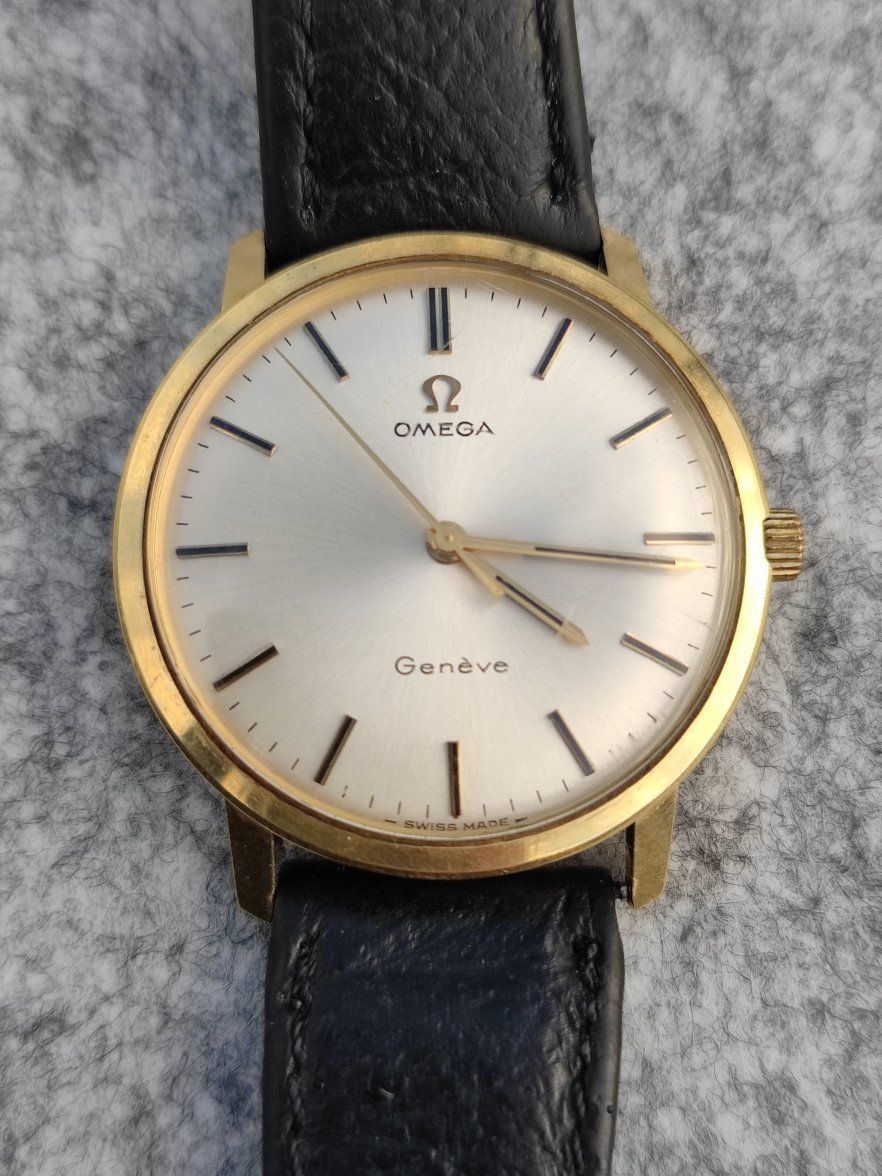
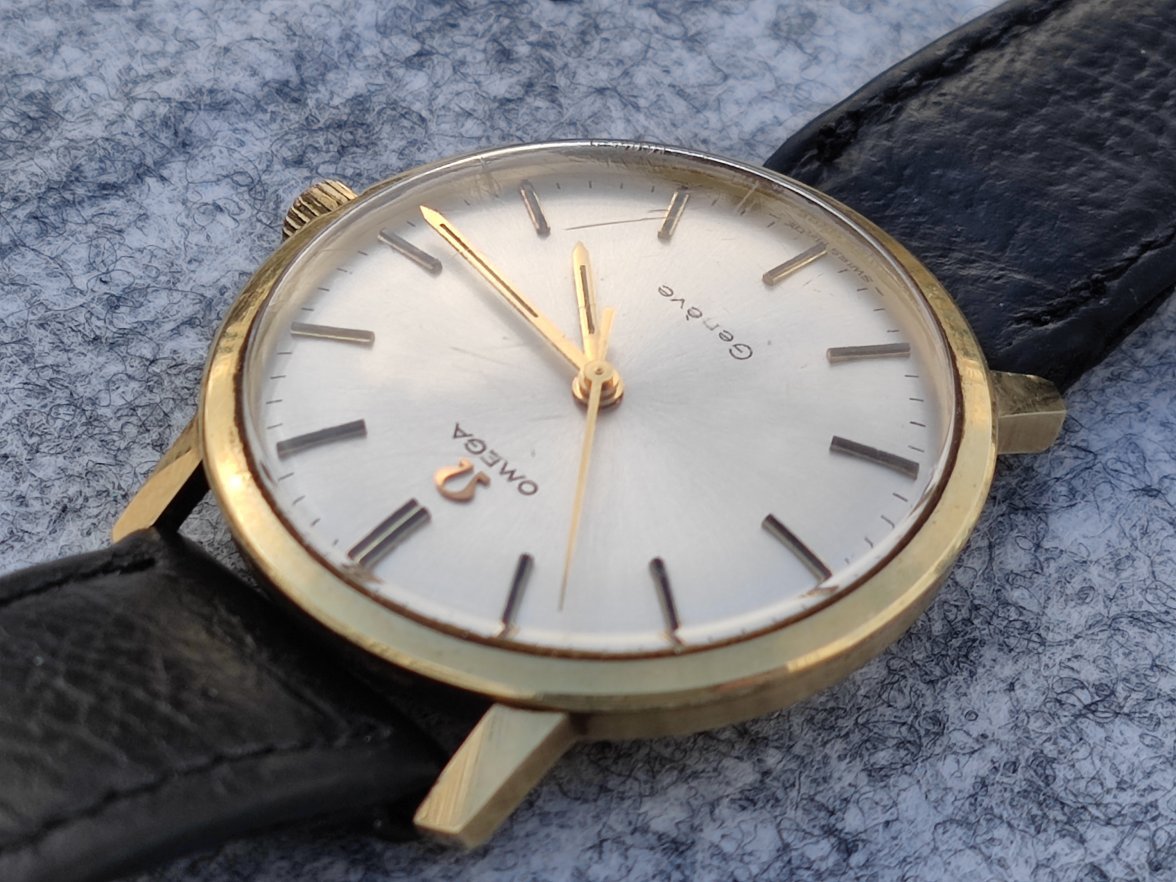
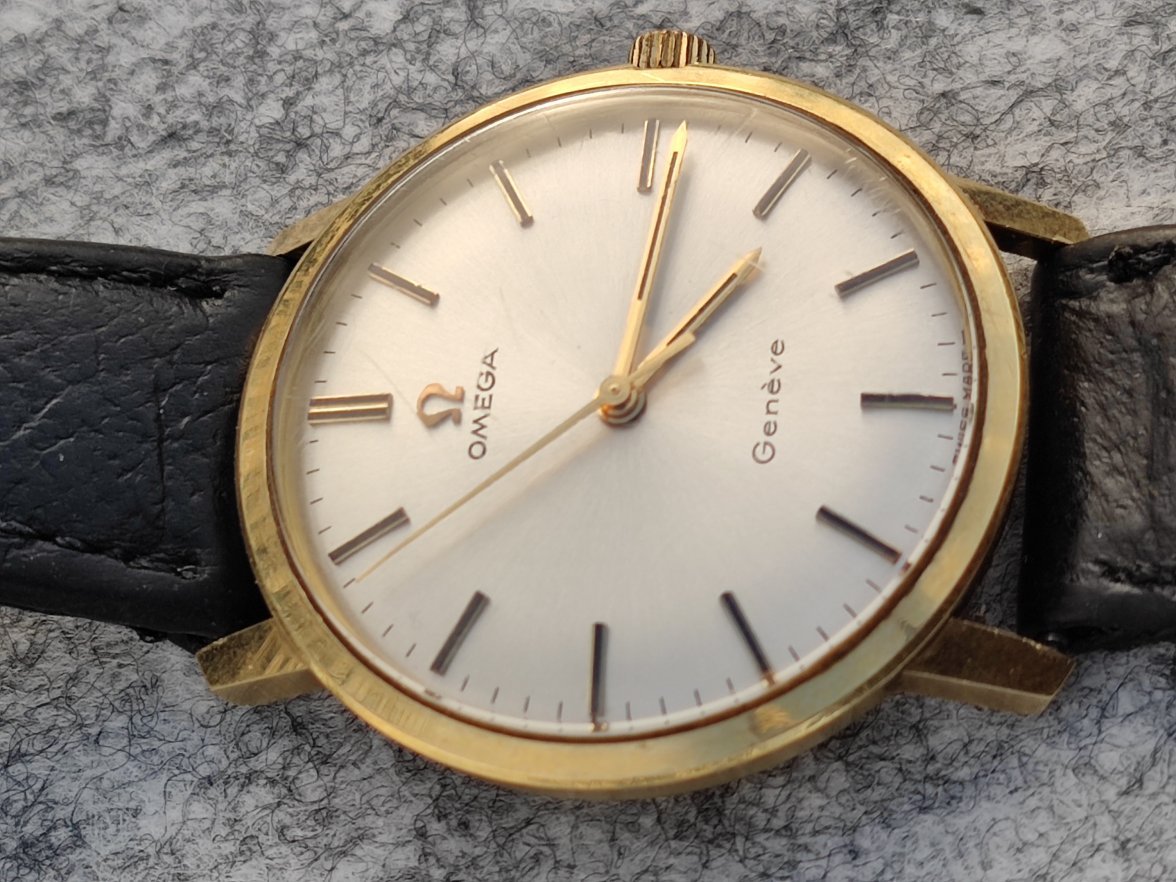
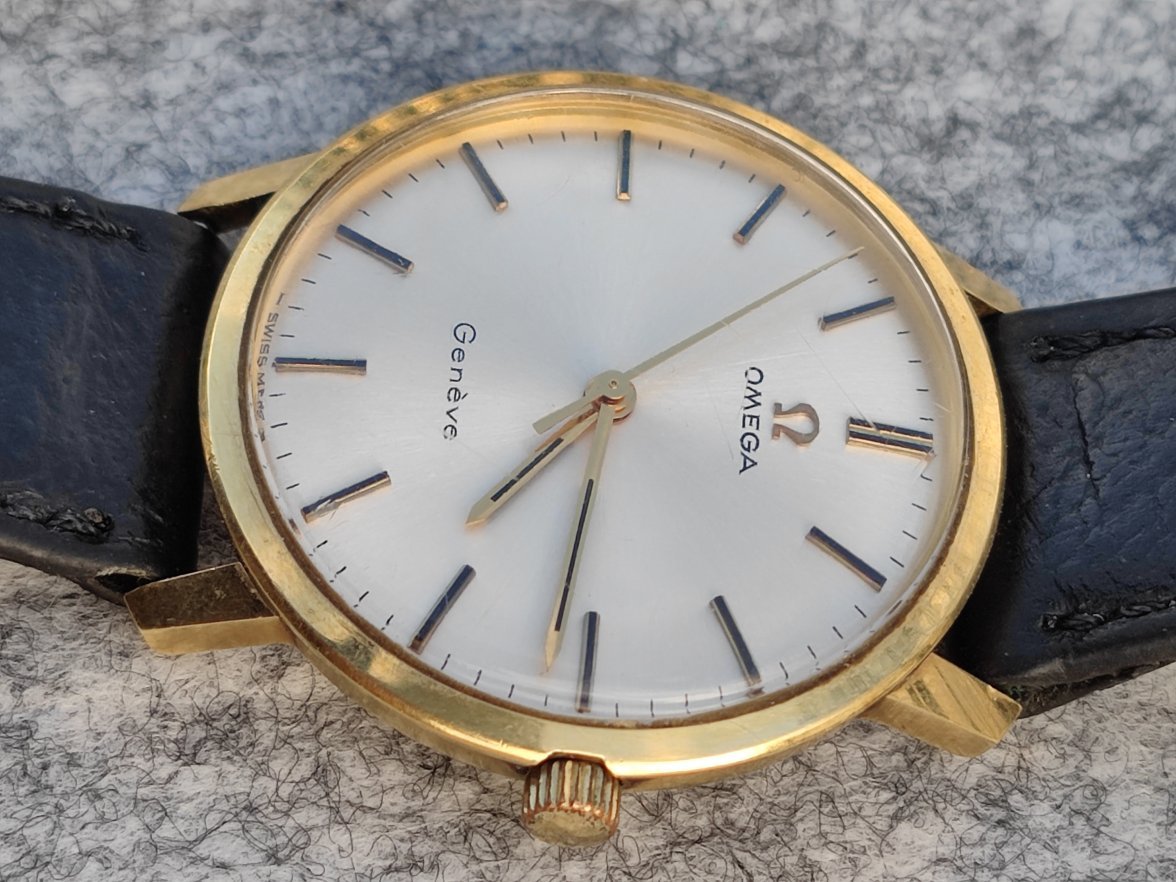

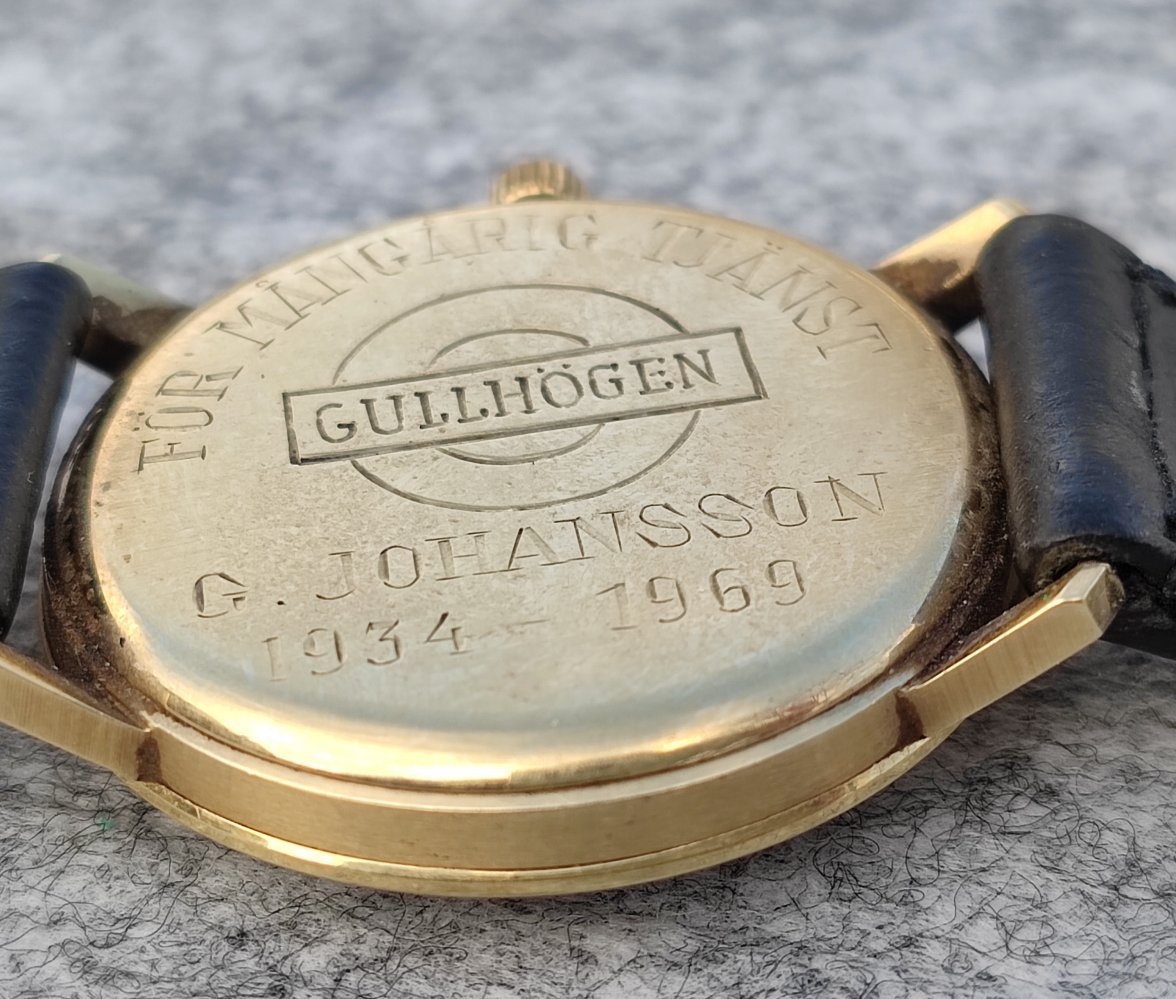
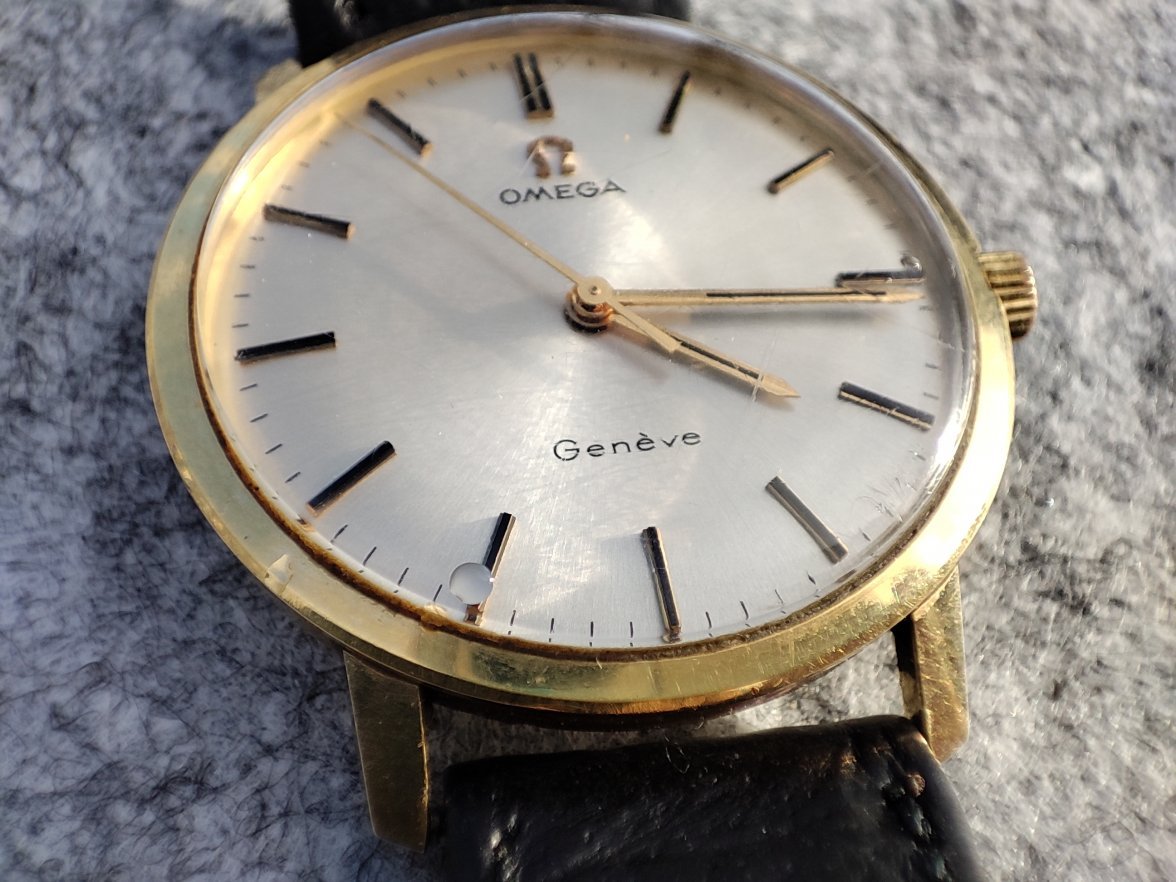
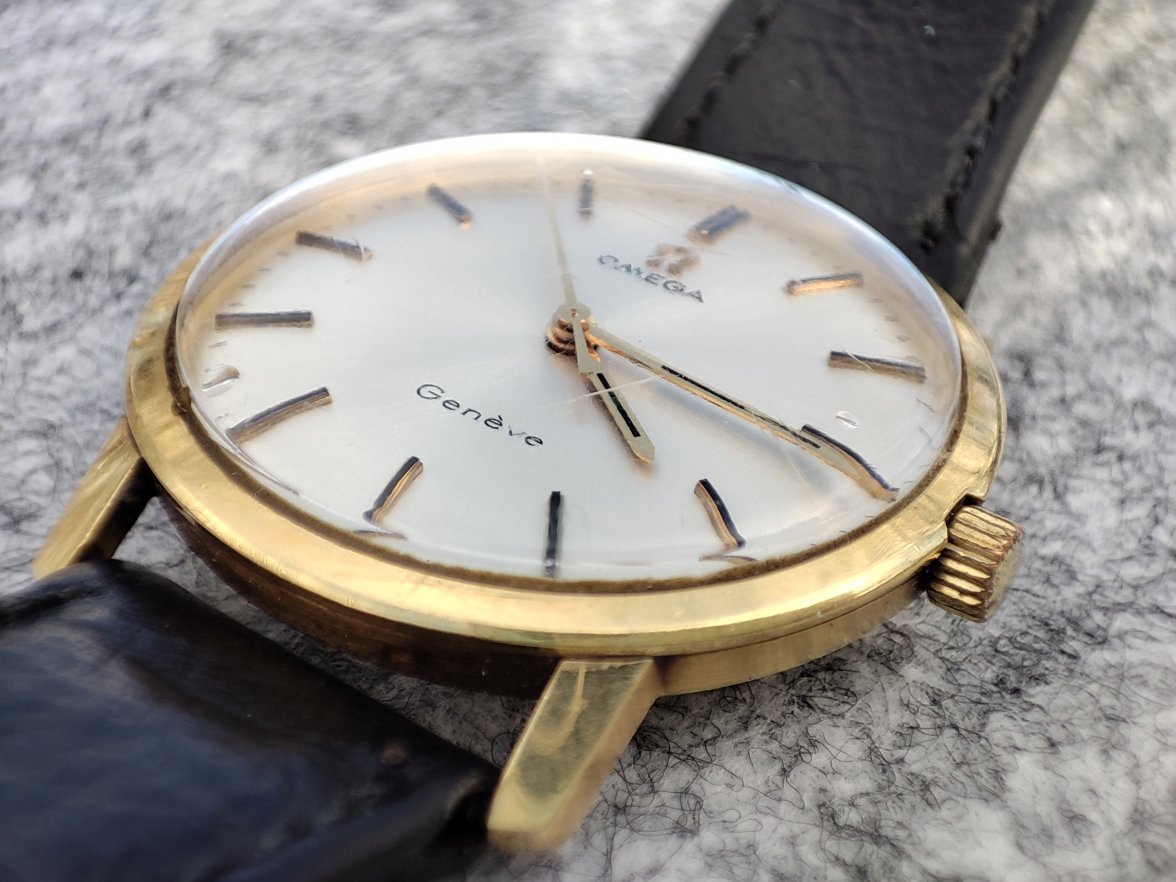
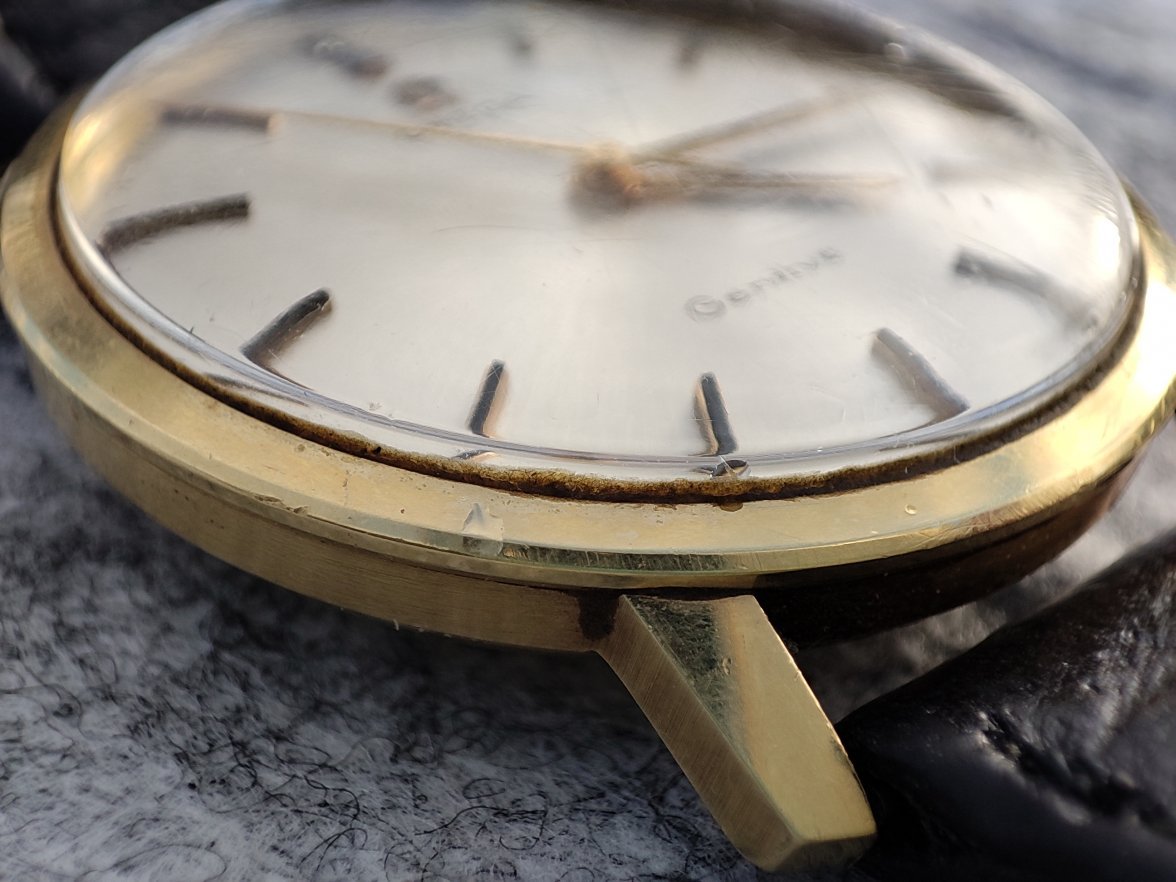
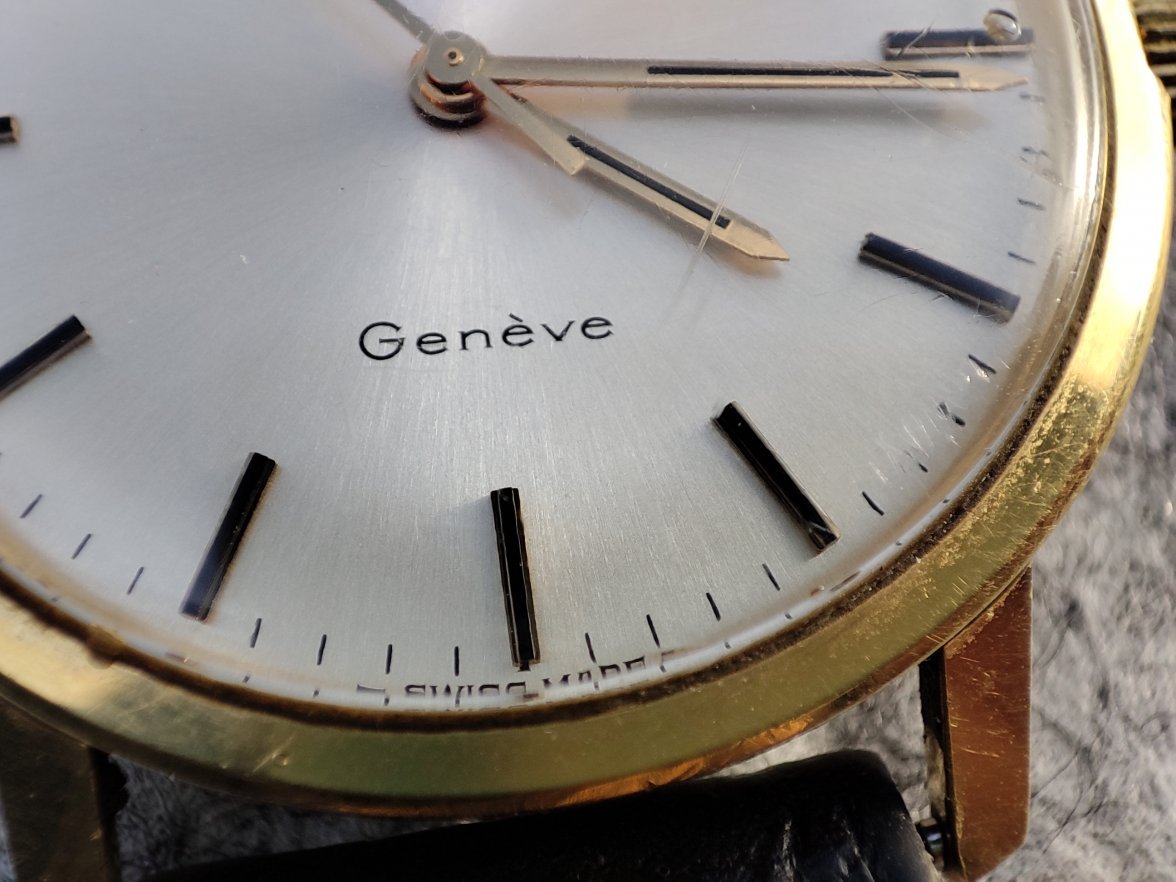
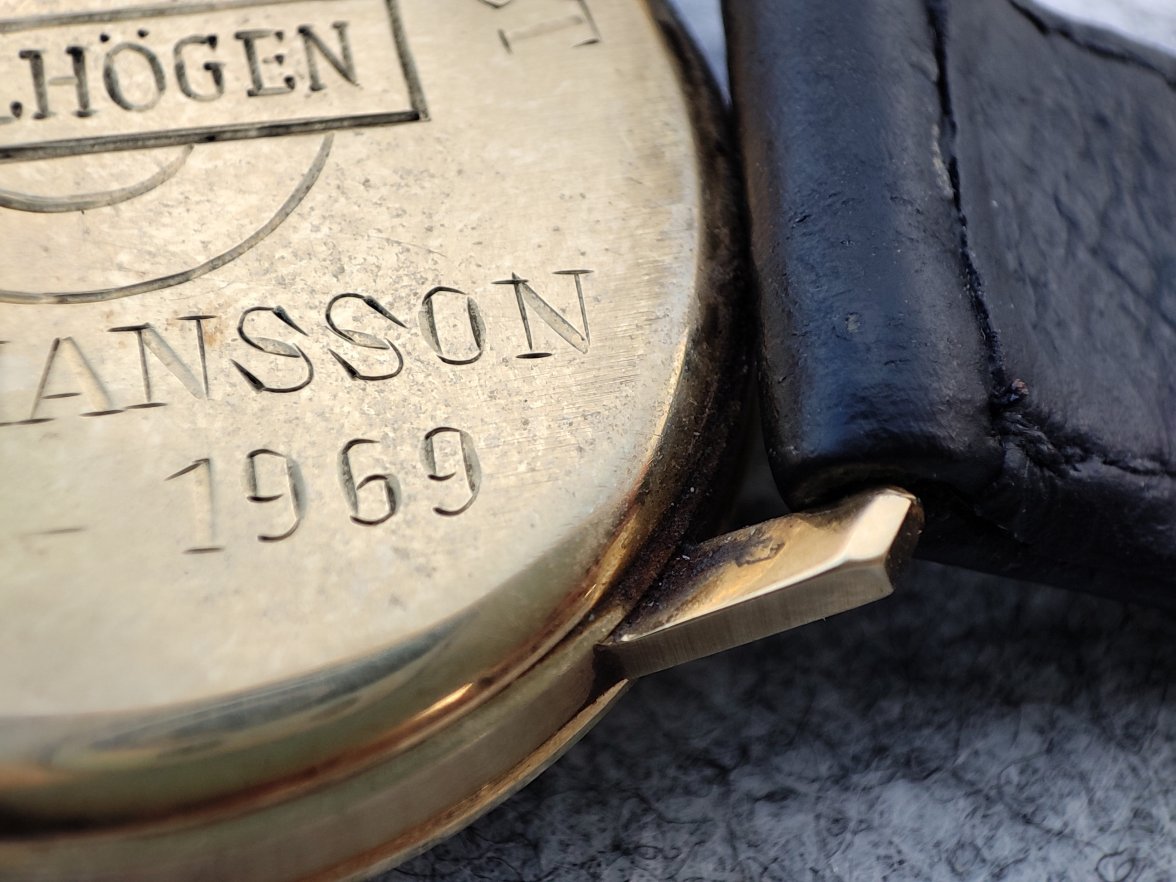
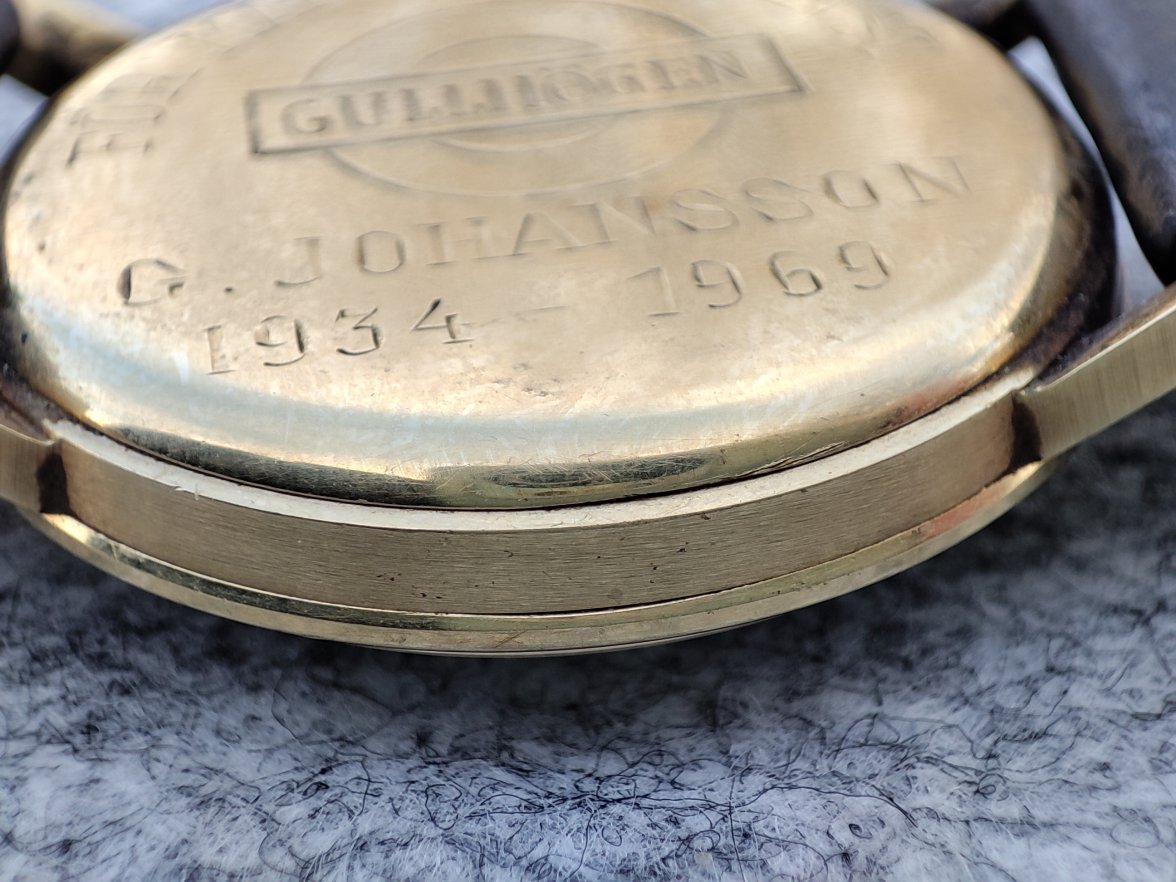
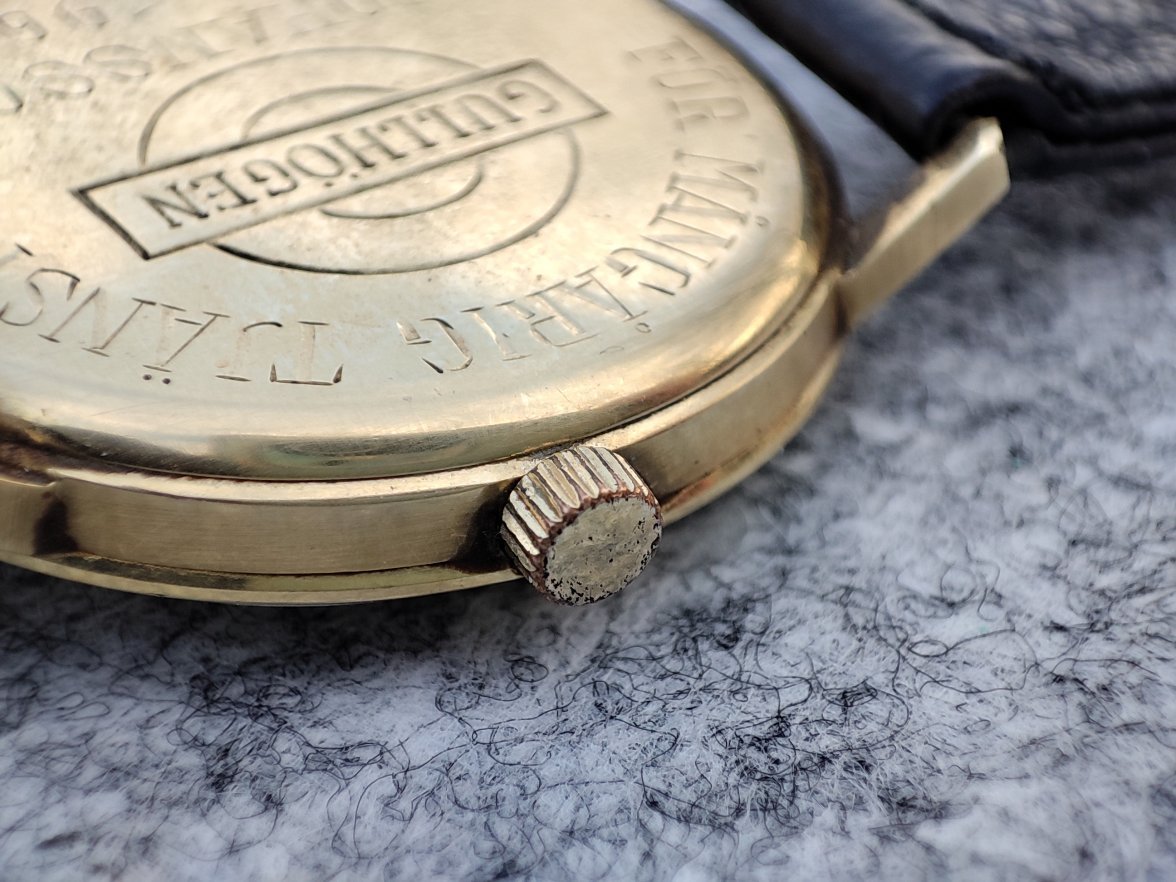
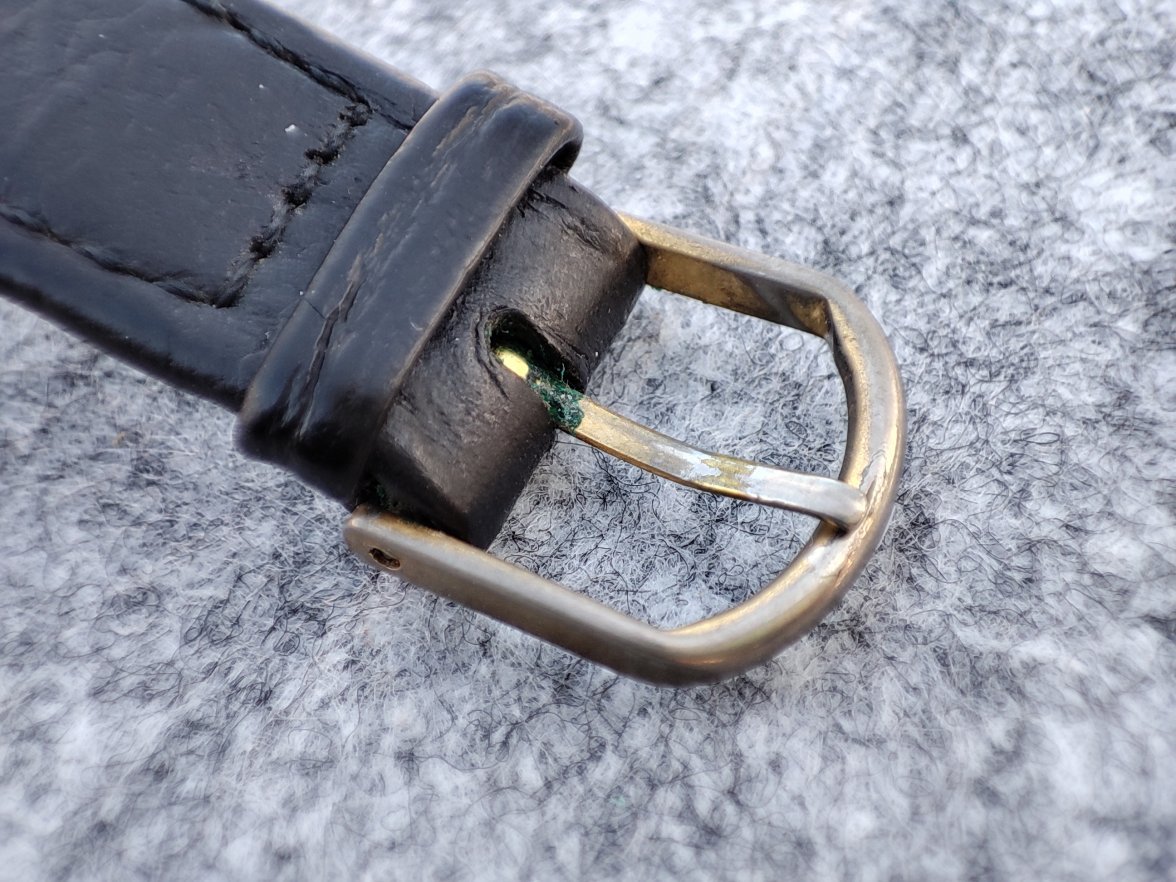
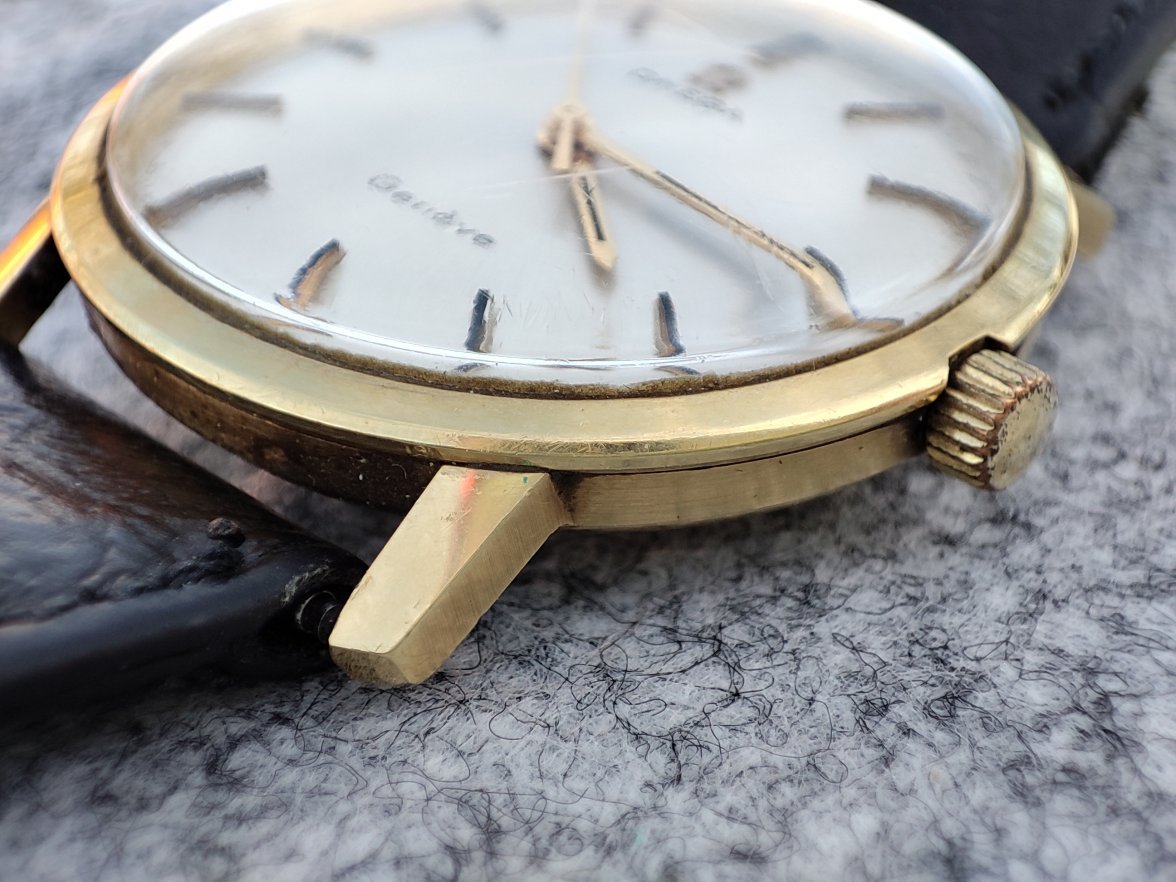
A friend of me who collects other types of watches recommended two watchmakers, one local and one in a different city, which could service the watch for me. I was planning to go to the local one for a first consultation, but then I found these forums and thought I might ask for some advice here first so that I would know more of what I'm taking about.
The only things I know about the watch is that it's 18K gold and probably made around 1969. The outer diameter is 32 mm and the distance between the lugs is 18 mm. There's an inscription on the back side saying my grandfather received the watch after working 35 years at the cement plant (probably bad for resell value, but it adds a lot of sentimental value to me). I think neither my grandfather nor my dad used it much, but my dad stored it quite carelessly for a long time. There's a lot of grime stuck in the corners and some scratches on the crystal which I think is from being shoved around together with other stuff in a box or drawer for many years. The movement is currently not working. The crown can be wound endlessly, so I suspect that the spring may be broken. I know my dad replaced the strap and he might have replaced the crystal at some point, but I'm not sure about that.
My goal is to restore the watch to a working and clean condition so that I can wear it together with a suit on special occasions. I will probably replace the strap again. Here are some things I would like to get advice about:
* How picky should I be about the watchmaker? Is it fine with a generalist, or do I need an Omega specialist?
* What might the original strap have looked like?
* Would a clock like this originally have come with a matching buckle that my father lost when he replaced the strap? Should I try to find a new matching buckle and how would I do that?
* How do I get the grime off? Should I do that myself, or should I leave it to a professional?
* Should I do anything about the scratches in the crystal? Should I replace it?
* Should I polish the gold surface or will I damage it?
I would also be very thankful for any additional information you could tell me about the watch.















 But I'll have to balance that with my desire to have a beautiful watch. And as I said, I have this vague notion that my dad may have already replaced the crystal once. After reading your answers, I think I'm leaning towards at least having the crystal polished.
But I'll have to balance that with my desire to have a beautiful watch. And as I said, I have this vague notion that my dad may have already replaced the crystal once. After reading your answers, I think I'm leaning towards at least having the crystal polished. Brasso will improve the state of a bracelet at the same time if the watch has one. This only applies to stainless steel, I don't go near gold-plated watches, bracelets or buckles with this stuff -- might be alright lightly used, might not. But then I only have one gold-plated watch and wear it infrequently.
Brasso will improve the state of a bracelet at the same time if the watch has one. This only applies to stainless steel, I don't go near gold-plated watches, bracelets or buckles with this stuff -- might be alright lightly used, might not. But then I only have one gold-plated watch and wear it infrequently.